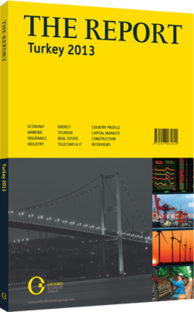OBG talks to Ahmet Zorlu, Chairman, Zorlu Holding

Interview: Ahmet Zorlu
How has the local textile industry evolved amid increasing global competition?
AHMET ZORLU: Turkey has a long and illustrious history in the textile business dating back to the days of the Ottoman Empire. However, in the early 2000s, local companies in this business faced challenging conditions in the global market, which was being flooded with less expensive products from high-volume manufacturers based in Asia. At the time, many analysts questioned whether Turkey would ever regain its competitive edge.
Yet, the industry managed to adapt and enter a new age. Today, the focus is on achieving higher quality, and on developing national brands and ready-to-wear items. We now export these in huge quantities to Europe, North America, and numerous emerging markets.
In 2011 textile and clothing exports were valued at roughly $25bn. By the 100th anniversary of the republic in 2023, the government aims for ready-to-wear products alone to account for $60bn in exports.
Moreover, local textile producers have taken over manufacturing plants in places such as China and Pakistan — a testament to the increased aggressiveness of Turkish enterprises in overseas markets.
To what extent are the government’s 2023 export targets realistic and achievable?
ZORLU: In 1980 the value of Turkish exports amounted to just $2.9bn. Three decades later, Turkey’s export revenues now exceed $150bn. The composition of our export portfolio has also changed dramatically, with 94% now being manufactured goods. Back in 1980, the majority of exports were low-margin agricultural products such as walnuts and grapes, with manufactured goods accounting for only about a third of total exports.
For this trend to continue, and for the state to reach its 2023 export target of $500bn, significant investment capital will be required for greater productive upgrading. Thus, it is incumbent upon regulators to make the investment environment as supportive as possible. In practice, this means streamlining bureaucratic procedures, moving forward with liberal reforms and the privatisation of state-owned enterprises, reducing local energy costs by creating indigenous power sources such as renewables, and enhancing incentives for research and development (R&D). Indeed, improving the climate for R&D spending is particularly significant, given that Turkey currently lags behind many Western nations in terms of R&D expenditure.
Finally, transitioning to a more value-added economy will require a major focus on education. When you evaluate countries such as South Korea, that made the leap to high-income status, you see that policymakers placed huge emphasis on human capital development.
What is your assessment of the quality of human capital development in Turkey?
ZORLU: First, young people today are undoubtedly more entrepreneurial than previous generations, despite the fact that our legal system does not necessarily reward risk-taking in business. In part, this is the result of Turkey’s increased integration in the global economy. Today, more and more young people travel and learn foreign languages, which has exposed them to new ideas and given them opportunities to meet with business owners from the US and Western Europe.
Our education system has also experienced major improvements, especially in the areas of participation and attainment. There are now more than 170 higher education institutions in Turkey, meaning that more citizens can obtain advanced academic qualifications. Further, new educational initiatives are receiving support from both the public and private sector.
Ultimately, Turkey’s young demographic profile presents both a challenge and an opportunity. The youth need long-term career opportunities, without which they may begin fostering social unrest as seen in nearby countries. Alternatively, if given a chance to succeed, our young people can help capitalise on the country’s demographic dividend. If this occurs, Turkey 20 years from now will be a country positively transformed.
You have reached the limit of premium articles you can view for free.
Choose from the options below to purchase print or digital editions of our Reports. You can also purchase a website subscription giving you unlimited access to all of our Reports online for 12 months.
If you have already purchased this Report or have a website subscription, please login to continue.

